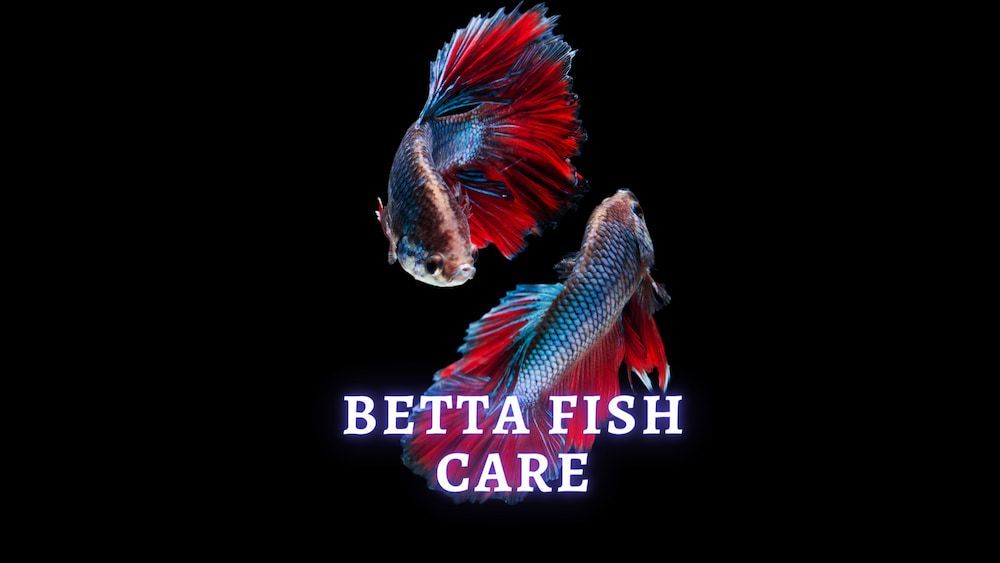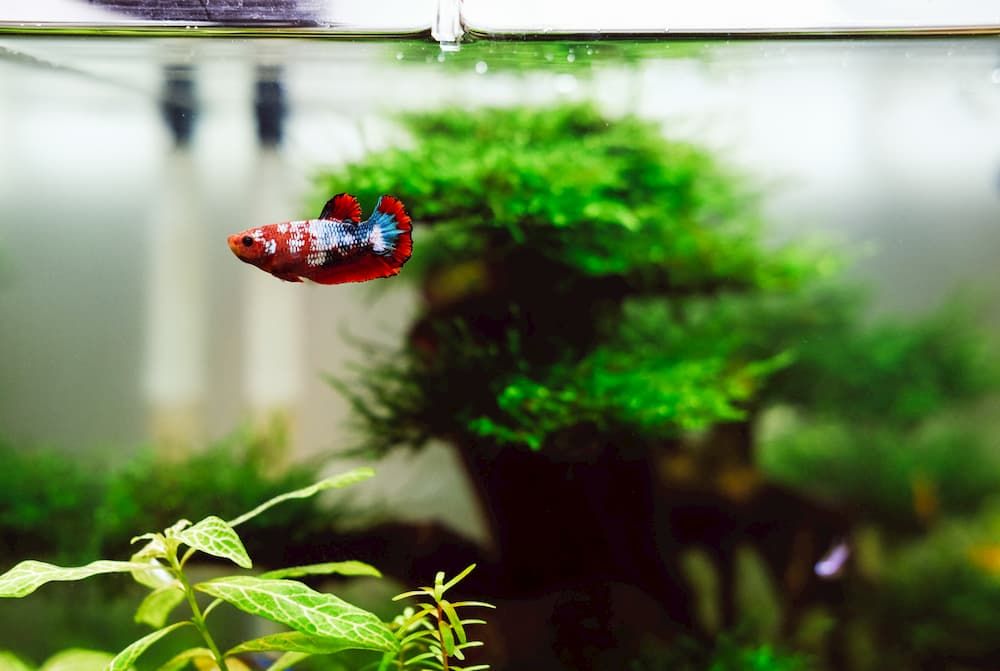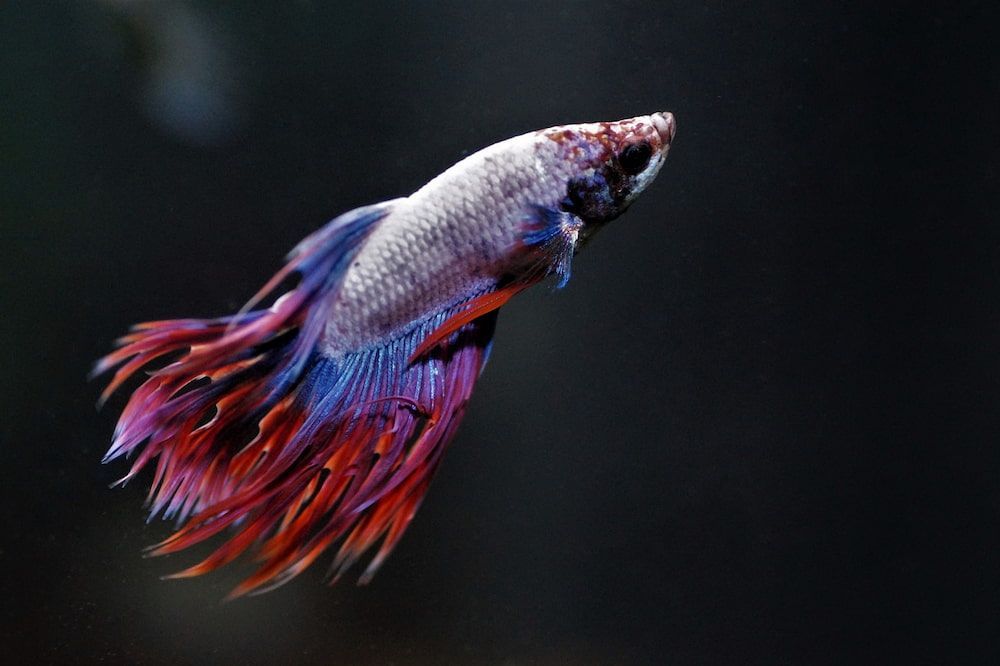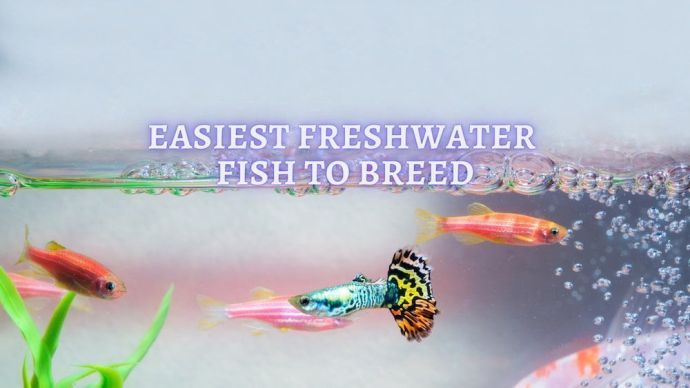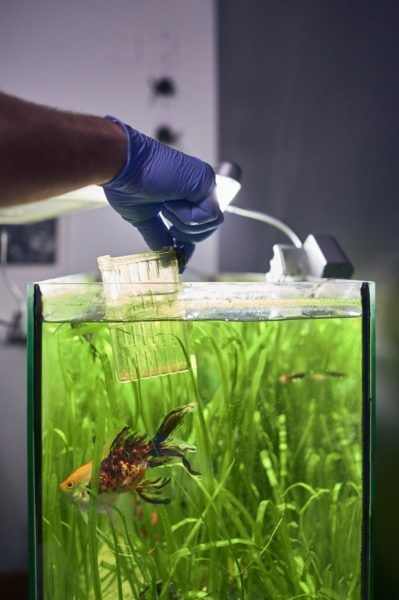Betta Fish Care Guide: The Basics of Betta Care
Written by:
Author: Scott Jeffrey
Scott is a professional blogger with 12+ years of experience in writing, and holds an MA in anthropology. He has two cats as housemates. Also, Scott is passionate to research on pet-related topics such as dog training, puppy feeding, and cat health.
View all 63 articlesLearn about our editorial process and veterinary review board.
Viewed: 65
Updated on: 03/07/2023
Betta fish are trendy aquatic pets to own today. They are one of the most colorful and beautiful pets you can enjoy in the aquarium, and their care needs are substantially more accessible than many other fish, such as tropical fish. If you have owned fish before, it may calm you to know that a betta fish tank is easier to keep, and betta fish care can be easier than some tropical community tank setups you may have had in the past.
If you have ever seen one of these beautiful fish in a pet store or you are seeking a fantastic pet that you can use to try out having fish in your home, this guide is for you. We will take you through all the care requirements of owning one of these pet and better prepare you for keeping a Betta fish for the first time.
Healthy vs sick checklist
| Healthy | Sick |
| Curious and easy swimming | Not eating for extended periods |
| May show aggression at various stimuli | Lethargic and hiding |
| Maintain bright colors | Coloring is darker |
| Fins appear undamaged | White growth on mouth or body |
| Eating regularly | Abnormal swimming |
| Exploring all parts of the habitat | Bloated |
| Heavy Breathing |
How to introduce a betta fish to a tank:
Bringing a betta fish into a new environment needs to be done safely. Like any other fish, they need to be placed into a tank, and they will need to grow used to it over time. To keep a betta fish healthy, it must go into the tank until they learn the water temperature. This pet live in warmer water and will need to learn the new temperature of the tap water or aquarium water you have. When you bring a betta home, place them inside the aquarium you have created inside the bag they came in from the store.
Placing the bag in the aquarium will ensure they can get used to the temperature in the tank. After 15 minutes of acclimating to the new temperature in the bag, you can get a net to transfer the Betta into your aquarium.
Do not add water from the bag into your tank, as any of the algae spores or potential contaminants in the water could affect your tank’s ecosystem.
The balance of chemicals in your tank will change with every fish you introduce to the environment. Hence, you must ensure that the PH, nitrate, and ammonia levels remain safe for your pet h and other plants or animals that share the tank. Add only one pet at a time, and do not overload the ecosystem. Take the time to let your fish acclimate to the environment on its own.
Tank size and environment needs
This underwater inhabitants will need a minimum tank size of 2.5 gallons, but most experts recommend a 5-gallon tank to give them some room to explore. A larger tank will also be more accessible for you to maintain, as smaller tanks can have nitrogen levels that fluctuate more readily.
A larger tank also gives more room for waste, ensuring that you can clean the tank less often. It is usually a myth associated with this underwater inhabitants that they can live in a small bowl or cup, but they thrive in areas where they have room to swim.
In the wild, betta splenden will live in shallow streams, rice paddies, and puddles, but they prefer to live in water where they have room to explore and hunt. Giving your betta fitting room to swim and places to hide can ensure you have a healthier fish that is less prone to sickness or lethargy.
A tank set out for a betta should also always be filled partially, as they must access the water’s surface to gulp the air. The species has a labyrinth organ ensuring that they can take oxygen from the perspective at the surface and from their gills.
An aquarium with a betta should also have a lid as these fish are known for jumping between bodies of water. With a top, you can ensure your Betta is less likely to try and leap out of your tank to seek another water source. Many pet owners with this underwater inhabitants have neglected to put a lid on their tanks and lost their pet.
Lighting:
This pet will also need some form of lighting to regulate their wake and sleep cycle. Having natural light in the room where your fish maybe can be an excellent way to establish this cycle. Introducing an artificial light and putting it out at night can ensure you can also select a pattern.
If you have natural plants in your aquarium, consider direct lighting to help them grow. Artificial light is recommended here, as having a tank in a room with excess natural light can often lead to algae growth, especially when you keep a tank with other plant life. Introducing artificial plants with an aquarium heater or a top light can help curb algae and bacteria.
Placing your beta habitat away from a window and using artificial light in the lid of your tank is often the best way to set up an aquarium to suit their needs.
Should a betta have other fish in the tank?
A betta fish can do well with certain inhabitants of an aquarium. Some bettas can be incredibly aggressive, but others will be fine in a tank with other fish.
Finding a species with dull colors and short fins is the best rule of thumb for choosing a good fish to go in a tank with a betta. Betta fish need their space and are often aggressive towards other underwater inhabitants.
If you plan on having other fish with this underwater inhabitants, increase your tank size to an 8-10 gallon tank at a minimum and try to pick a small and streamlined species that does not resemble the look of a betta.
Two male betta fish in the same tank will fight. Only add two of these fish in the same tank if you can keep them separated and give them appropriate space. Two males will fight each other and cause stress to other fish. It is usually best to try different species and increase your tank size if you plan on having other fish with a betta.
READ MORE: Betta Fish Tank Mates
Plants hideouts and décor for a betta fish:
Betta fish need proper hiding places to keep them feeling safe. These hiding areas will help the fish mimic their natural habitat and reduce stress while they are in the tank. Live plants are an ideal solution for your tank as they can have cleaning benefits. Fake plants and leaves inside the tank should not be too sharp or made out of material like silk that can take on algae. It is also essential to inspect your pet hideouts to ensure that they don’t have too sharp edges.
This underwater inhabitants need to feel comfortable to stay healthy, and a big part of keeping them healthy is giving them a habitat that resembles where they would live in the wild. Their habitat needs to have areas to hide, including plants, sticks, and gravel. Introducing a natural plant will keep the water free of ammonia and improve the quality of life for fish like Betta. Betta owners should inspect items for sharp edges before they install them in the tank, and they also need to watch their betta fish to ensure that it is clear and clear from new items brought into the tank.
Water temperature and quality for betta fish:
Beta fish thrive in a tropical climate, which will often mean bringing the temperature in your tank to a temperature of 72-80 degrees. The temperature should not exceed 82 degrees or drop below 65, which could harm your pet. Bettas thrive at temperatures of 75-76 degrees. An aquarium heater is an excellent way to maintain the temperature consistently. These temperatures of 20 watts are adjustable with detectable thermostats and are a perfect way to heat a small tank. Be sure to monitor your tank temperature and the heater you are using to maintain the quality of your tank. Your Betta will not do well with sudden temperature changes, so make sure that the thermometer and heater are working well can be crucial.
Thermometer and heater needs:
A thermometer that manages at least 20 watts of power with its shutoff thermostat will likely be fine for anything you need for a betta fish. An adjustable heater with a built-in thermostat is the best solution. A thermometer with a probe that touches the water is usually best. Some tank thermometers stick to the side of the tank, but these will only sometimes capture an accurate reading. If you have a heater or pump with a build thermometer, ensure that it is located in an area of the tank that is away from heat sources such as lamps that could affect it.
Filtration:
Filtration is not mandatory when keeping beta fish in tanks under 3 gallons, but to keep your fish healthy, it is recommended to install a filter. Sponge filters are a good start, but a carbon filter will often better fit your fish tank. An aquarium filter will reduce the number of bacteria in your tank and improve your fish’s care level. A filtration system is an inexpensive addition to your tank, and it can often be included when you get a complete tank setup. An adjustable filter is usually best suited for this underwater inhabitants. Betta fish are not the strongest swimmers, and getting a filter that is too powerful, that moves the water too quickly, can place extra stress on them. Try to get a filter that is small for the tank or a tank that is better suited for your betta fish with a trim level of filtration.
Water type:
Water for betta fish needs to be free of contaminants in regular tap water. Betta water conditioner is a product you can use to add to your tap water and improve the ph balance for bettas. They like their water to be slightly acidic, with a pH range of 6.5-7.5. Tap and spring water are often higher in their acid level, and distilled water is stripped of the minerals that bettas will need to stay healthy. Using a betta water conditioner or purchasing a pH kit will help keep your tank water at perfect levels for betta fish.
Habitat care, cleaning, and maintenance:
The ecosystem of a betta fish needs to be regularly maintained. As your pet starts to consume food and eliminate it into the water supply, the bacteria in the tank can grow. Poor betta health is often linked to increased nitrates and ammonia, which can occur due to poor water quality. Uneaten food and waste that are not filtered out of the environment or cleaned up later can harm your pet’s health.
How big should aquariums be for betta fish?
Aquariums for this underwater inhabitants should be at least 2.5 gallons to give them the space to roam around and hide. If you are planning on having several fish, getting a tank of 5-7 gallons is best so that every fish will have space.
How often should a betta tank be cleaned?
A betta tank needs to be cleaned regularly, and the frequency of cleanings comes down to the size of the tank. If you have an unfiltered tank under 3 gallons, you should consider cleaning it out at least 1-2 times per week. A filtered tank will only require a 100% water change every month to keep bacteria down. Moving water out at 25% of the volume every week or two can help you keep your tank clean if you have a good filter.
A pH kit is essential to keeping water quality after every clean. You should do a 100% clean of your tank once a month while removing your pet. Acclimate them back into their environment after removing them from the tank.
RELATED: How To Clean Freshwater Fish Tank?
The best substrate for the betta tank:
Betta needs substrate for hiding and mimicking their natural environment. 1-2 inches of aquarium gravel work well for this. The rule of thumb for filling a tank with the substrate is to consider 1.5 lbs of rock for each tank’s gallon of water.
How to clean decorations in betta tank
As well as cleaning the tank, you will need to clean the decorations in your betta tank. Cleaning the decorations will remove algae or bacteria, which is best done with a rinsing. Algae cleaning wands or magnetic cleaners are suitable for the tank. A 1:9 bleach-to-water solution that is gentle can help to remove bacteria from these components, but you will need to be sure to rinse them thoroughly before adding them back to the tank.
Before introducing any new shelters or toys into the tank, you need to clean them appropriately and remove any trace levels of bleach. Never wash any tank components with soap or harsh cleaners, as these could poison the fish.
Different types of betta fish
There are over 28 types of betta fish that you can commonly find at a local pet store. Most of them can be told apart from their colors, tails, and patterns. The most common differences between betta fish are their tail shapes, such as the crowntail, Halfmoon, and veiltail betta fish. Their colors can be uniform or in several colors as well. Some have translucent skin but other betta fish have a black, blue, or copper skin type. All betta fish eat the same food and can also be called siamese fighting fish.
Patterns, including the dragon scale betta, butterfly, and koi variety, have been created through years of selective breeding. These types can be harder to find, but they are lovely and unique pets. Although the species and requirements of siamese fighting fish do not change, their colors and looks can vary based on their breeding program.
Starting a maintenance schedule for your betta tank
The best way to keep up with maintenance and cleaning on your betta tank is with the help of a maintenance schedule. A regular monthly water change schedule will ensure that your betta fish has the best water conditions for your tank. A maintenance schedule among family members will also ensure that you have a good division of labor in caring for your pet care.
With a maintenance schedule, you might pay attention to areas of your betta fish tank that need cleaning or lose track of when you are getting the full tank cleaned. Making sure you are prepared to clean your tank on time can help you add it to your routine chores and keep your pet as healthy as possible.
FAQ:
Is betta easy fish to care for?
Betta fish are some of the best fish to care for as a beginner in aquariums. Because they don’t require salt water or live food, they are easy to feed and keep healthy. Betta fish food is often freeze-dried brine shrimp, and it can be put into the betta’s tank at a regular daily interval. Other fish can be much more temperamental to care for but having one to two betta fish makes for a beautiful aquarium with healthy fish.
Do betta fish need salt water?
Betta fish can live in light saltwater conditions, but they live primarily in freshwater conditions in the water. The fish don’t need any aquarium salt to maintain their health, and they often thrive in freshwater that is free of contaminants. If you plan on having a betta fish with other species that require heavy salt water or ocean conditions, you may want to put them in separate tanks.
How to tell if betta fish is content?
Betta fish are content when they are actively exploring their environment. If their fin condition looks good and they are regularly eating. Happy betta fish swim quickly and will have very vibrant colors with fins that are unbroken.
Is betta a good fish for beginners?
Betta fish are some of the best fish to have for beginners. They are easy to feed and care for and often thrive with freeze-dried foods like betta formula. Live food is not a requirement with this fish, and they often thrive right from the pet store with fresh water and live plants. They only need a small tank and can be much more resilient than other fish.
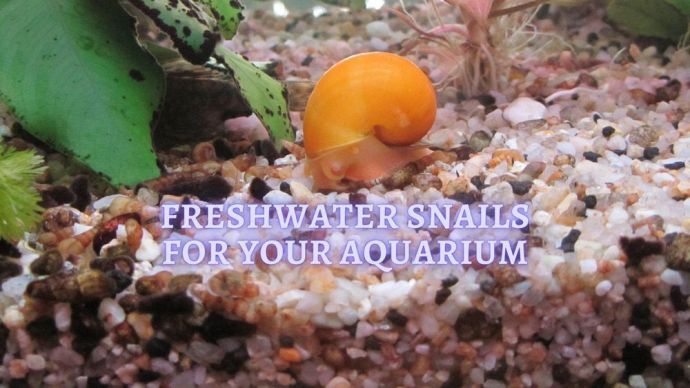 Fish Owners Tips Types of Freshwater Snails: Exotic cleaners for your Fish Tank
Fish Owners Tips Types of Freshwater Snails: Exotic cleaners for your Fish Tank - 1569
- 0
 Freshwater Fish A Guide to the Black Moor Goldfish: Tank Setup, Temperatures and Care Routine
Freshwater Fish A Guide to the Black Moor Goldfish: Tank Setup, Temperatures and Care Routine - 93
- 0
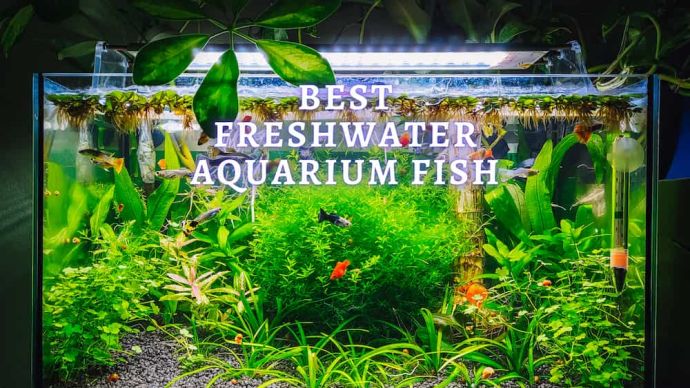 Freshwater Fish The Best Freshwater Aquarium Fish: TOP-15 Freshwater Fish for Fish Tanks
Freshwater Fish The Best Freshwater Aquarium Fish: TOP-15 Freshwater Fish for Fish Tanks - 126
- 0









